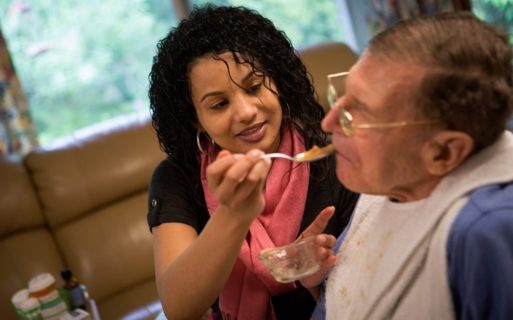Today SevenPonds is speaking with Bridget Waller, R.N. the founder and owner of Hillendale Home Care, located in Walnut Creek, California. In this first part of a two-part interview, Bridget discusses non-medical home care as an option for patients with chronic illnesses or who are approaching the end of life.
Debra: Thank you so much, Bridget, for taking the time to talk to me today. Let me start by asking about non-medical home care. What is it exactly?
Bridget: It’s nice to talk to you. Non-medical care is care that doesn’t require specialized knowledge. For instance, administering an intravenous infusion is considered skilled or medical care because it requires the knowledge of a trained healthcare professional. Assistance with bathing is an example of non-medical care because it does not require specialized education. Other examples of non-medical care include running errands, preparing meals, doing light housekeeping and accompanying someone to a doctor’s appointment.
Debra: What are your main duties as the founder and owner of the company?
Bridget: I guess you could say that I oversee everything. I meet new patients and work with my staff on opening and developing care plans. I monitor client care and sometimes make client visits. In addition, I handle the business end of things such as accounting and licensing.
Debra: Speaking of accounting, who pays for non-medical care?
Bridget: In the United States, non-medical care is not covered by Medicare nor by most health insurance policies. Some long-term care insurance agencies provide for private duty or non-medical care. Mostly, though, people who need this type of care pay for it out of pocket. Another option in some states is the medical assistance program for people who cannot afford care otherwise. Our state’s program is known as Medi-Cal. Most other states simply refer to their programs as Medicaid.

Credit: america.aljazeera.com
Debra: How do you monitor the care you give your patients?
Bridget: We have regular meetings with the patient, the family and other agencies involved, which are known as care plans. During these care plans, we make any needed changes to the treatment the patient is receiving. If a patient’s condition is changing rapidly, we monitor him or her more frequently, sometimes several times per week. We may recommend additional services such as hospice care.
Debra: So you work with other agencies that may be beneficial to a patient’s care?
Bridget: Often. Sometimes we work with other agencies that provide skilled or medical home care. We also work with hospice patients to help meet their care needs.
Debra: How long do your visits last?
Bridget: The length of the visit depends on the client’s needs. Some of our patients require 24/7 care. Others only need us for a few hours each week. We have one client whom we see 15 minutes a day to help tie his shoes. We bill for a minimum of one hour per visit. Patient’s needs change frequently. Some require fewer hours as their health improves while others require more hours as their health declines.
Debra: Bridget, thank you for taking the time to speak with me.
Bridget: Thank you, Debra.
Please join us next week for part two of our interview with Bridget

 How Can Non-Medical Home Care Keep Your Loved One Safe and Comfortable? An Interview with Bridget Waller, Part One
How Can Non-Medical Home Care Keep Your Loved One Safe and Comfortable? An Interview with Bridget Waller, Part One



 “Hand to Earth” by Andy Goldsworthy
“Hand to Earth” by Andy Goldsworthy
 Trans Remembrance Project Provides a Community of Grieving
Trans Remembrance Project Provides a Community of Grieving
 Caring for a Dying Loved One? Be Gentle With Yourself.
Caring for a Dying Loved One? Be Gentle With Yourself.














